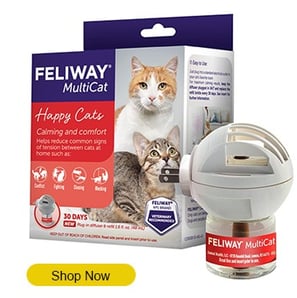Understanding and Managing Aggression in Cats
7/2/20243 min read


Cats are often seen as gentle, loving companions, but they can also display aggressive behaviors that may perplex or concern their owners. Understanding the reasons behind feline aggression and learning how to manage it is crucial for maintaining a safe and harmonious household. This article will explore the various types of aggression in cats, their causes, and practical tips for managing and preventing aggressive behavior.
Types of Aggression in Cats
Play Aggression: Play aggression is common in kittens and young cats, involving behaviors like pouncing, swatting, and biting during play. This type of aggression is a normal part of play behavior, mimicking hunting activities.
Fear Aggression: Fear aggression occurs when a cat feels threatened or cornered, resulting in hissing, growling, and striking. This can be triggered by unfamiliar people, animals, or environments.
Redirected Aggression: Redirected aggression happens when a cat cannot reach the source of its aggression and instead attacks a nearby person or animal. This can occur if a cat is agitated by something outside, such as another cat or a loud noise.
Territorial Aggression: Territorial aggression is aimed at defending a cat's perceived territory from intruders, including other cats or new pets. Cats are naturally territorial animals, and they may react aggressively to protect their space.
Petting-Induced Aggression: Some cats become overstimulated or sensitive to petting, leading to sudden biting or scratching. This can be due to sensory overload or discomfort, often in specific areas like the belly or back.
Causes of Aggression in Cats
Medical Issues: Pain or discomfort from conditions such as arthritis, dental problems, or infections can cause aggression. Neurological problems affecting the brain or nervous system can also alter behavior.
Environmental Stressors: Changes in routine, such as moving or new household members, can cause stress and aggression. Boredom or lack of mental and physical stimulation can also lead to aggressive behavior.
Past Experiences: Cats that have been mistreated may exhibit aggression as a defensive mechanism.
Managing and Preventing Aggression in Cats
Identify Triggers: Keep a journal of when and where aggressive incidents occur to identify patterns and triggers. Consult with a vet to rule out any medical causes of aggression.
Behavioral Modification: Gradually expose your cat to the trigger in a controlled manner, rewarding calm behavior. Use treats, praise, and play to reward non-aggressive behavior.
Provide a Safe Environment: Ensure your cat has access to safe, quiet areas where they can retreat if they feel threatened. Provide climbing structures like cat trees to help your cat feel secure and reduce territorial disputes.
Enrichment and Stimulation: Engage your cat with interactive toys that mimic hunting behaviors. Provide puzzle feeders and toys to keep your cat mentally stimulated.
Appropriate Handling: Learn to recognize your cat's body language and stop petting before they become overstimulated. Avoid forcing interaction, especially if your cat shows signs of discomfort or fear.
Use of Pheromones: Products like Feliway mimic the natural calming pheromones that cats produce, which can help reduce stress and aggression. Pheromone diffusers, sprays, or collars can be used in areas where your cat spends the most time or in situations that typically trigger aggression.
Professional Help: If aggression persists, consider consulting a feline behaviorist for personalized advice and strategies.
Conclusion
Understanding and managing aggression in cats requires patience, observation, and a proactive approach. By identifying the underlying causes and implementing appropriate strategies, you can help your cat feel more secure and reduce aggressive behaviors. Remember, each cat is unique, and what works for one may not work for another. With time and effort, you can foster a peaceful and loving relationship with your feline friend.
Related Articles
Purrfect Meow
Join our Meow community
© 2024. All rights reserved.
PurrFectMeowSeven is a participant in the Amazon Services LLC Associates Program, an affiliate advertising program designed to provide a means for sites to earn advertising fees by advertising and linking to Amazon.com. As an Amazon Associate, we earn from qualifying purchases.





